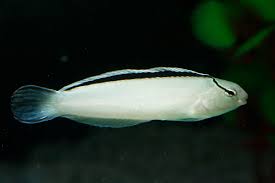The Dragon in Chinese Folklore Literature: A Symbol of Power, Wisdom, and Mysticism

The dragon, a legendary creature known for its majestic and powerful presence, occupies a prominent place in Chinese folklore literature. Throughout centuries of Chinese literary tradition, dragons have been depicted as both divine and mythical beings, representing various aspects of life such as prosperity, authority, and protection. From ancient texts to contemporary stories, dragons have consistently symbolized the fusion of nature, spiritual power, and the cosmic order. In Chinese folklore literature, dragons are not just fearsome creatures but are often imbued with qualities that reflect the deep cultural and philosophical values of Chinese society.
In this article, we will delve into the role of the dragon in Chinese folklore literature, examining its symbolic meanings, the different types of dragons, and its presence in famous folk tales and myths. The dragon is an enduring cultural icon that transcends time, offering insight into the ways in which Chinese literature has woven this mystical creature into the very fabric of its cultural identity.
The Role of the Dragon in Chinese Folklore
In Chinese culture, the dragon is a complex symbol with a broad range of meanings. Unlike the fearsome, fire-breathing dragons of Western mythology, Chinese dragons are often seen as benevolent beings that wield great power and influence. They are commonly associated with water, rainfall, and natural forces, making them crucial figures in agricultural society. In Chinese folklore literature, the dragon is typically depicted as a long, serpentine creature with the power to control rain and storms, ensuring that crops are nourished and prosperity follows.
The dragon’s symbolism is tied to the Five Elements of Chinese philosophy: wood, fire, earth, metal, and water. As a being that can control water, the dragon is linked to the element of water, which is essential for the fertility of the land. It is also believed that dragons can communicate with the heavens, making them intermediaries between the human world and the divine realm. This celestial connection gives the dragon a sacred status, making it a symbol of wisdom, strength, and good fortune.
In Chinese mythology, the dragon is often a figure of authority. It is said that the Emperor of China was considered the “Son of Heaven,” and the dragon became his emblem, representing his divine right to rule. The emperor’s throne, often referred to as the Dragon Throne, symbolized his supreme power, as dragons were seen as the protectors of the emperor’s authority and the welfare of the nation. Thus, dragons in Chinese folklore literature are often depicted as beings that not only possess immense power but are also entrusted with guarding the harmony and stability of the world.
Types of Dragons in Chinese Folklore Literature
Chinese folklore literature features a variety of dragon types, each with its own distinct attributes and roles. These dragons are categorized based on their natural characteristics, abilities, and their relationship to the elements. Below are the most prominent types of dragons found in Chinese folklore:
- The Imperial Dragon (皇龙, Huáng Lóng): The most revered and respected dragon, the Imperial Dragon represents the authority and power of the emperor. Its image is often used in imperial regalia and symbols, and it is associated with imperial governance and prosperity.
- The Black Dragon (黑龙, Hēi Lóng): The Black Dragon is a symbol of mystery and the unknown. In Chinese folklore literature, this dragon is often portrayed as a powerful and dangerous entity, capable of causing great destruction. It is sometimes associated with chaos and disorder, embodying the forces that threaten to disrupt the cosmic balance.
- The Yellow Dragon (黄龙, Huáng Lóng): The Yellow Dragon is a symbol of power and authority, often associated with the emperor and the imperial court. It is believed to have the ability to bring peace and prosperity to the land, making it a positive and auspicious symbol.
- The Dragon King (龙王, Lóng Wáng): The Dragon King is the ruler of the seas and rivers in Chinese mythology. He is often depicted as a benevolent ruler who controls the waters, ensuring the health and safety of the people. In folklore literature, the Dragon King plays a crucial role in maintaining harmony between the earth and the water, preventing floods and droughts.
- The Celestial Dragon (天龙, Tiān Lóng): The Celestial Dragon resides in the heavens and is said to have the ability to communicate with the gods. In Chinese folklore literature, the Celestial Dragon is often seen as a divine being that acts as a messenger between the mortal world and the heavens.
- The Earth Dragon (地龙, Dì Lóng): The Earth Dragon is connected to the earth and the natural world. It is often depicted as a protector of the land, ensuring that the environment remains fertile and conducive to life.
Famous Dragon Tales in Chinese Folklore
The dragon has a prominent place in Chinese folklore literature, appearing in many ancient and modern stories that reflect its cultural and spiritual significance. Some of the most famous dragon tales in Chinese folklore include:
The Legend of the Dragon Gate (龙门传说, Lóngmén Chuánshuō)
One of the most famous dragon tales in Chinese folklore is the Legend of the Dragon Gate. This story tells of a carp that swam up the Yellow River and, after overcoming numerous obstacles, leapt over the Dragon Gate waterfall. As a reward for its perseverance, the carp was transformed into a dragon, ascending to the heavens. This tale symbolizes the power of determination and transformation, illustrating the belief that anyone, no matter how humble, can achieve greatness if they have the willpower to persevere.
The Legend of the Dragon Gate is often interpreted as a metaphor for the journey of self-improvement and spiritual enlightenment. The carp’s transformation into a dragon signifies the realization of one’s potential and the attainment of higher wisdom. This story is frequently referenced in Chinese literature, and the Dragon Gate waterfall remains an important cultural landmark in China.
The Story of the Dragon and the Phoenix (龙凤呈祥, Lóng Fèng Chéng Xiáng)
In Chinese folklore, the dragon and the phoenix are often paired together as symbols of harmony and balance. The Dragon and Phoenix are frequently depicted as complementary forces, with the dragon representing masculine energy and the phoenix symbolizing feminine energy. This balance of forces is essential for maintaining order in the universe.
The story of the Dragon and Phoenix tells of their union in marriage, which brings prosperity and good fortune to the land. The two creatures are said to represent the perfect union of opposites, symbolizing the harmony between heaven and earth. In Chinese literature, this tale emphasizes the importance of balance and mutual respect between different forces.
The Dragon and the Pearl (龙与珠, Lóng yú Zhū)
In another popular dragon story, the dragon is said to possess a precious pearl that has the power to grant wishes and bestow great wisdom. The pearl is often depicted as a symbol of enlightenment and spiritual growth. In the story, the dragon must guard the pearl from evil forces that seek to steal it. The pearl represents wisdom and knowledge, and the dragon’s role is to protect this treasure from being misused.
This tale emphasizes the importance of wisdom and the responsibility that comes with possessing knowledge. The dragon, as the guardian of the pearl, symbolizes the need to protect valuable resources and use them wisely for the benefit of all.
The Dragon’s Role in Chinese Folklore Literature: Symbolism and Significance
The dragon’s presence in Chinese folklore literature is not just a reflection of mythical creatures but a deeper cultural and spiritual symbol. The dragon represents the connection between humans and nature, the earthly and the divine. It is a symbol of transformation, strength, wisdom, and protection. In Chinese culture, the dragon has the ability to influence the natural world, ensuring that prosperity and harmony prevail.
The dragon is also a powerful metaphor for human potential. Stories of dragons often feature characters who undergo significant challenges and trials, emerging transformed and enlightened. These tales encourage perseverance, determination, and the belief that anything is possible through hard work and commitment.
Moreover, dragons in Chinese folklore literature are often portrayed as benevolent beings that protect and guide the people. Unlike the fearsome dragons in Western mythology, Chinese dragons are associated with the forces of nature, acting as guardians of the earth and protectors of the people’s well-being. They serve as intermediaries between the mortal realm and the heavens, ensuring that balance and harmony are maintained.
Conclusion
The dragon holds a central role in Chinese folklore literature, symbolizing a wide range of qualities that are essential to Chinese cultural identity. Whether depicted as a celestial being, an emperor’s emblem, or a guardian of the natural world, the dragon represents power, wisdom, and protection. Its stories, rich in meaning and cultural significance, have been passed down through generations and continue to inspire the Chinese people today.
As Chinese folklore evolves and adapts to modern times, the dragon remains a timeless symbol, embodying the spiritual and cultural values that have shaped Chinese society for centuries. Through its presence in literature, the dragon continues to remind us of the importance of strength, resilience, and the pursuit of wisdom in our own lives. The dragon’s legacy lives on in Chinese folklore, literature, and the collective imagination of the people.

